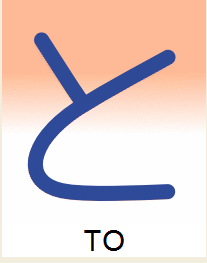
Shall we continue with the learning of particles?
Here go two more.
Particle の (no)

This is one of the easiest particles out there, if not the easiest and soon you will understand me.
It is used to indicate that something belongs to someone. To be more precise, what comes after belongs to what comes before.
Ex:
私の家です
My house
彼のかさ
his umbrella
山田さんの本
Mr. Yamada's book
私のお母さんのえんぴつ。
My mother's pencil.
私たちの教室
our classroom
お姉ちゃんの髪
Big sister's hair.
Following this basic principle, you can always determine that one thing belongs to another, regardless of what you are talking about: just indicating possession, indicating the origin of something, category, composition, creation, indicating the location or direction, adjectives and etc…
The principle is always the same. Keep your mind on what is most practical to remember, which in this way is easier for understanding to flow naturally.
Particle と (to)

That particle is so simple as the first.
It has the function of linking two nouns, and pay attention to this, only two to nouns.
Don't try to connect two adjectives like “beautiful and intelligent” or “calm and rarefied”, for these situations there are other forms of expression, and they are a little more advanced, but they are not seven-headed animals.
Ex:
うしとうまとひつじ
Ox, horse and sheep.
There's no problem in using it more than once, but if it's a lot of things you're referring to, it's easier to use the や particle, which will be studied later.
Continuing with the examples…
私とあなた
You and me
お父さんとお母さん
the father and the mother
水とお茶
water and tea
犬と猫
Dog and cat
CDとDVD
CD and DVD
Very simple today's particles.
They don't have a lot of complications, but if you have any questions, put them in the comments and we'll answer.
Soon there will be more particles, take advantage of this time to fix one and the other.
We advise that enter japanese websites, venture into this world, even if the only thing they understand is the small particles. Because at that moment, even if you don't know what's being said there, you'll recognize the particle and you'll be able to determine why it's there.
Good studies and see you later!
